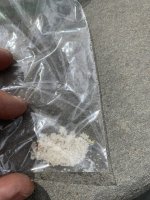I've been reading articles from Orenda, and becoming more convinced that my water was suffering negative LSI. My PH was actually higher at open, 8.0. I closed at 7.7-7.8, PH.
Its interesting that Orenda recommends raising calcium 500-550pm
"Do not be afraid to raise your calcium to something way higher than you would operate in the summer. 500 - 550 ppm+ is great! If your pool freezes, 400 ppm calcium hardness is the bare minimum in our opinion. Keep in mind, rain and snow will get into your pool (unless you have a solid cover), and this precipitation will dilute your water."
Its interesting that Orenda recommends raising calcium 500-550pm
"Do not be afraid to raise your calcium to something way higher than you would operate in the summer. 500 - 550 ppm+ is great! If your pool freezes, 400 ppm calcium hardness is the bare minimum in our opinion. Keep in mind, rain and snow will get into your pool (unless you have a solid cover), and this precipitation will dilute your water."



